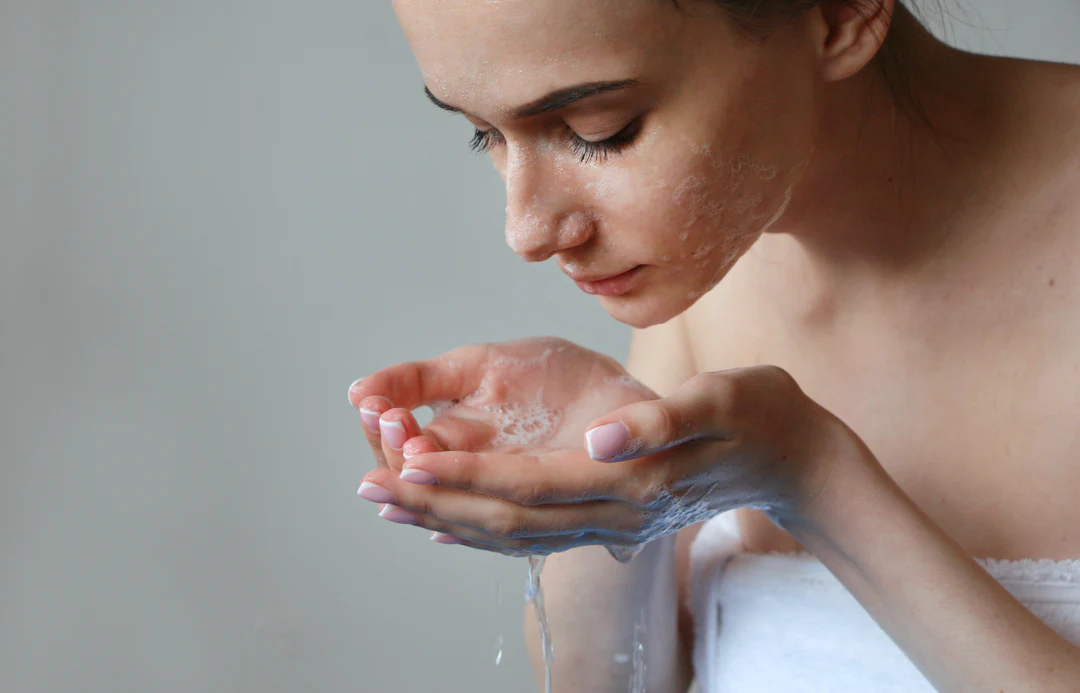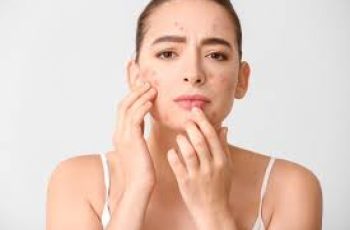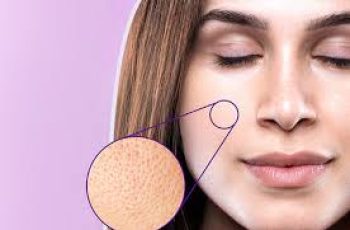Can I Mix Azelaic Acid with L-Ascorbic Acid?
When it comes to quality skincare ingredients, both Azelaic Acid and L-Ascorbic Acid are big names in the beauty world. Don’t let the overly scientific names confuse you, you already know about these two ingredients and chances are they’re already in the formula of some of your skincare products.
As I mentioned in my previous blog post, we often get carried away and overdo it when it comes to skincare products. It’s easy to happen, but it can sometimes lead to unwanted redness, irritation, and reactions. That’s what we’re going to be talking about today, and with any luck, we’ll make things a little clearer. So with that in mind, let’s take a deeper dive into whether or not you can mix Azelaic Acid and L-Ascorbic Acid together.
What is Azelaic Acid?
Azelaic acid is a naturally occurring acid in the body that’s derived from barley, wheat, and rye. Known for being effective in treating acne, rashes, and other blemishes by clearing out bacterial buildup in the pores, while boosting skin cell turnover, ensuring faster healing of the skin and minimizing the appearance of dark spots and uneven skin tone.
Commonly found in over-the-counter products, many prefer prescription formulas because of the higher ratio. This is because azelaic acid takes some time to work, as it needs to be used correctly to ensure that it does not cause burning, drying and flaking of the skin. To avoid this, always consult a doctor or dermatologist to ensure that you are using the right formula and percentage for you and your skin.
If you want to learn more about azelaic acid, read our dedicated blog post on how azelaic acid works on the skin.
What is L-Ascorbic Acid?
L-Ascorbic Acid, also known as Vitamin C, is a skincare ingredient that is well-loved by dermatologists and skincare enthusiasts. And for good reason, as it has amazing benefits for the complexion. It is rich in antioxidants and is one of the most effective ingredients for fighting free radicals, such as UV rays, pollution and other environmental influences. You will find that your skin looks and feels more radiant overall, fine lines and wrinkles become less noticeable, and your skin looks more even-toned and has a better texture.
You can find out more about L-Ascorbic Acid in our special blog post. So don’t forget to check it out.
Can Azelaic Acid and L-Ascorbic Acid be used together?
Yes, you can, but make sure you use them correctly to ensure the best effects of these powerful ingredients while avoiding unwanted side effects. There are a variety of ways to use azelaic acid and L-ascorbic acid together. Here are some examples of the most effective ways to reap the benefits.
Allow 15 minutes between applications.
Waiting about 15 minutes between each application will help rebalance the pH of your skin. This is important because L-ascorbic acid and azelaic acid have lower pH levels, meaning they are more acidic. Using them on top of each other can be too harsh on the skin and cause irritation. Plus, these powerhouses simply won’t be able to deliver their benefits to your face.
Alternate the time of day you use each ingredient
Many people find that altering the time of day they use these ingredients is the best way to ensure each ingredient works on their skin. Since vitamin C gives the skin a radiant glow and is rich in antioxidants, many prefer to use a vitamin C-rich serum as part of their morning routine. Completing this step with azelaic acid in the evening will help regenerate and rejuvenate the skin while you sleep and prevent irritation that can occur from overdoing it.
Alternate the days you use each ingredient
If you like to use azelaic acid and L-ascorbic acid in your morning routine, you can alternate between applying them to your skin. This way you can ensure that you are getting the benefits of both ingredients without having to worry about skin irritation. The important thing to remember is that both acids increase your skin’s sensitivity to light. Always use an SPF of 30 or higher every day to protect your skin from UV radiation and other environmental influences, even on cloudy days and when rain is in the forecast.
These are some of the most common ways to use L-ascorbic acid and azelaic acid together. If you’re still concerned about using these powerful ingredients in your daily routine, talk to your doctor or dermatologist to find the most effective way to incorporate these ingredients into your daily routine.
Can Azelaic Acid and Vitamin C be used together?
Yes, technically you can use Vitamin C and Azelaic Acid together, but I would avoid doing so. While both ingredients are completely safe to use, it’s often possible to have too much of a good thing. As I mentioned before, pH is often the cause of skin irritation, and it can happen easily. Since our skin’s average pH is around 4.7, this “neutral” value can often interfere with more acidic formulas, preventing them from achieving optimal results.
To avoid all of these issues, I recommend using both ingredients together with the options above. If you want to learn more about using Vitamin C and Azelaic Acid together, The Beauty Insiders has another blog post about their use.
Another way to make sure your skin is happy with both ingredients is to do a 24-hour patch test before applying all over your face. Take a 10p-sized amount of the product and apply it to the inside of your forearm, leave it on for 24 hours, and if there are no signs of irritation or redness, it’s good to go.
Here’s more about mixing Azelaic Acid and L-Ascorbic Acid. If you have any other skincare questions, don’t forget to follow us on the Procoal Instagram. There’s a skincare expert waiting to answer your questions via private message.
DQH Knowledge drop: In your 20s, your skin cell turnover decreases. (Cell turnover is a key component in keeping your skin youthful.) You know what else slows down? Your collagen production. Starting in your 20s, collagen decreases by about 1 percent per year. Should you want to prevent fine lines and wrinkles, start by eliminating behaviors that contribute to premature aging. “If it’s bad for you, it’s bad for your skin,” says dermatologist Michel Somenek.
“Cigarette smoking reduces blood flow to the skin and causes premature wrinkling and a dull skin texture. Making the repeated pursed motion to inhale can also cause smoker’s lines. Alcohol and recreational drugs are toxins for the skin that damage its cellular structure and DNA,” Somenek tells us. “The faster you eliminate vices while you are young, the better chance your skin and body have to recuperate.” Also, adopting an anti-aging routine in your 20s is key. After all, the best offense is a good defense. We spoke to Somenek and experts Joshua Ross and Audrey Kunin to find out more.
Keep reading for the best anti-aging products for your 20s, according to skincare professionals.
Sunscreen
“We all know that the sun is the number one cause of skin aging and starting the prevention in your 20s is very important,” Ross says. “The majority of your sun damage won’t start to appear until you’re in your 30s, so don’t wait until you see it surface or you’ll be behind the curve. Stay ahead of it with a good-quality zinc-based sunscreen worn daily.”
Farmacy Green Defense Daily Mineral Sunscreen
An invisible sunscreen with SPF 30, plus botanical extracts meant to protect skin with tons of antioxidants. Bonus: It’s clean and fine to use under makeup.
Bareminerals Complexion Rescue™ Tinted Moisturizer Broad Spectrum SPF 30
Although we recommend you use your SPF and moisturizer separately, we also understand moments when you don’t have time or energy for that extra step. For those times, this bareMinerals moisturizer is a great thing to have on hand.
Vitamin C Serum
“A great introduction to anti-aging is to start with a vitamin C serum in your morning skincare routine,” Ross says. “It’s a powerful antioxidant that will neutralize free radicals and brighten the skin.” He adds that it’s a great way to counteract the effects of the sun’s harmful rays, which, as previously mentioned, are among the biggest causes of premature aging.
Drunk Elephant C-Firma™ Vitamin C Day Serum
The Drunk Elephant C-Firma is a lightweight serum that promises to give skin a glow by combining the brightening powers of vitamin C with ferulic acid, l-ascorbic acid, and vitamin E. The included sodium hyaluronate is meant to replace hydration loss, so you shouldn’t have to deal with any irritation.
Sunday Riley C.E.O. Rapid Flash Brightening Serum
This potent serum is jam-packed with vitamin C (15 percent, to be exact), which means it’s a potential superstar at both brightening skin and dousing it in antioxidants.
Peptides
Using peptides on your skin has many benefits, says Somenek. “The skin barrier is what defends the body against pollution, UV rays, bacteria, and toxins. It can be damaged by several everyday factors. Using topical peptides aids in building a stronger barrier,” he says. “Peptides comprise elastic fibers, which are a type of protein. These fibers help to make skin appear taut and firm. Peptides can also help repair damaged skin, relieve inflammation, and even out skin tone. Some peptides can kill acne-causing bacteria that is common in 20-somethings.”
Kunin agrees, saying, “Peptides are an excellent entry point for supporting collagen.” She recommends looking for face and eye treatments that contain these collagen-boosting powerhouses.
Charlotte Tilbury Magic Eye Rescue Cream
This Charlotte Tilbury super-emollient eye cream has a base of coconut oil and shea butter (read: it’s incredibly hydrating). Botanicals plus peptides are meant to help reduce dark circles and boost collagen, respectively.
This creamy moisturizer serves up potent collagen-boosting peptides and pycnogenol, and antioxidant-rich vitamin C. “Instead of sitting on top of the skin, peptides penetrate the outer layer so they go deep. The ‘signals’ they send tell the cells to produce elastin and collagen, which are needed for youthful-looking skin,” explains Somenek.
At-Home Peel Pads
Remember that skin cell turnover fiasco we talked about earlier? One way to help support it is by exfoliating. “Exfoliation is important to help keep skin fresh and luminous,” Kunin says. She recommends using at-home peel pads as an easy and effective way to exfoliate.
“The goal in your 20s is to fight the slowing pace of cell turnover. It is wise to use products that gently exfoliate, yet still remove oil and other impurities. Products that have Alpha Hydroxy Acids (AHA) or Beta Hydroxy Acids (BHA) are a good choice.”
According to Somenek, you should only exfoliate two to three times a week. “People of all ages are guilty of over-exfoliating and that can be too much of a good thing,” he says.
Dermadoctor Kakadu C Intensive Vitamin C Peel Pad
A few swipes of this Derma Doctor powerful peel pad promise to leave your skin glowing and smooth, thanks to the seven (yes, seven) types of chemical exfoliants, including AHA and BHA. It also contains vitamin C via Kakadu plum extract for added brightening and antioxidant protection.
KEY INGREDIENTS Kakadu plum extract is sourced from the Kakadu plum, a fruit grown in northern Australia. It contains vitamin C, which restores the skin’s natural barrier, increases collagen production, and soothes irritation.
Dr. Dennis Gross Skincare Alpha Beta® Universal Daily Peel Pads
These are the gold standard of peel pads, with a cult following and over 900 five-star reviews on Sephora. They’re easy to use and contain a blend of anti-aging exfoliating acids.
Emollient Night Cream
“In your 20s, you need to start upping the hydration in your skincare routine. You may have been cautious of over-moisturizing because of acne in your teens, but as you enter your 20s, your skin transitions and becomes drier,” Ross says. “I recommend an emollient night cream added into your evening skincare regimen.”
“Twenty-somethings need to make sure that they are not using creams that will clog their pores and cause excess oil production,” says Somenek. Opt for non-comedogenic products.
Cerave Skin Renewing Night Cream
One great choice is the CeraVe Skin Renewing Night Cream, which is a non-comedogenic night cream that leaves skin soft and glowy. It combines the moisturizing powers of ceramides and hyaluronic acid.
RoC Retinol Correxion Max Hydration Creme
“The best night cream ingredients contain retinol, benzoyl peroxide, and/or salicylic acid or hyaluronic acid. The goal is to moisturize, yet remove excess oil,” says Somenek. This Roc Retinol Correxion cream fits the bill as it contains both hyaluronic acid and retinol so it promises to moisturize while also being non-comedogenic.



